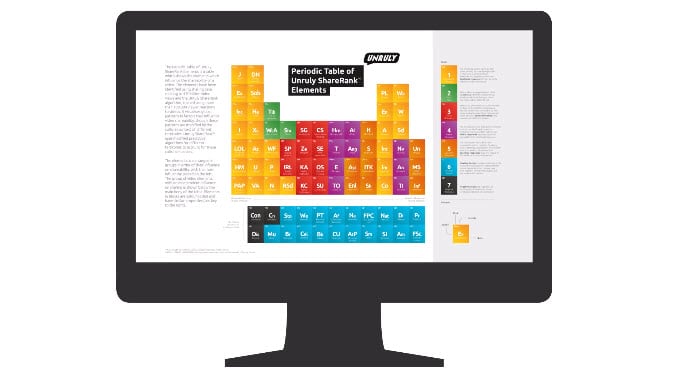How To Make Your TV Commercials Work On Digital
Do you watch TV commercials during your favorite shows? Or do you zone out? Go into the kitchen and make a smoothie or a hot drink? Or even fast forward if you are watching on a digital video recorder (DVR)? Or are you a cord-cutter?
Research shows that people will actively choose to watch a TV commercial (TVC) if the content is strong. Now, with TV audiences only watching under 20% of TV commercials through to completion[1], advertisers need to change their approach and start making ads that work on consumers’ terms.
Unruly has tested 200 TVCs using our proprietary algorithm Unruly ShareRank™, which uses consumer panel data on emotional responses, preferred sharing platforms, and online environments and devices to predict and enhance the shareability of online video content.
We found that some TVCs were succeeding across both TV and digital formats while others were not engaging online viewers (and most likely viewers on TV weren’t big fans either).
There is also a third category of ads which can only be classified as missed opportunities: TV ads with strong Unruly ShareRank scores and very low share rates online. These ads were engaging for viewers and would have had strong shares online as well, had online media distribution been a focus for the advertising team.

So how do you create content that will work on both TV and digital? Well, here are some do’s and don’ts to reduce, reuse and recycle your TVCs, from Unruly’s recent Science of Sharing: TV Commercials Study:
DO make content that evokes a strong emotional reaction in your audience. Our research, and that of many academics studying the online video space, shows that making an emotional connection is key to grabbing viewer attention and engagement – which in turn drives sharing.
DO take social motivations into consideration in the creative brief. Unruly has identified 10 social motivations that are key in the online video space. Whether it is seeking an opinion with a controversial video, or sharing a video due to the social good it promotes, these are the agents of creating buzz.
DO create content that resonates with viewers regardless of which device they’re using. Your targets are migrating across multiple screens – even millennials, who still use their laptop most when it comes to watching connected content – so your stories need to work on a variety of devices and screen sizes as well.
DO consider the caveats of the various online formats when creating your TV+Digital content. The need to grab viewers in the first 5 seconds of a skippable pre-roll ad and the high-impact visuals needed for sound-off newsfeed videos also apply to grabbing channel-surfing and DVR fast-forwarding TV audiences.
DO take advantage of the online targeting capabilities to reach your desired audience. Programmatic video distribution offers far more granular targeting capabilities than its TV counterpart, and advertisers can target viewers based on purchase consideration, passion points, household income and composition, purchasing behavior etc. and optimize campaigns in real-time against these metrics. You can pre-set rules and start and stop ads based on weather or televised events to make your ad as relevant as possible to your audience.
DON’T confuse viewers. When locked into a :15, :30 or :60 standard TV runtime, cramming too much into your narrative can easily confuse viewers.
DON’T go guerilla and lightly brand your video. Promote your brand! Research shows there is no correlation between brand presence and online sharing. It’s best if you can make your brand or product integral to the video, e.g. a character in it. Regardless of technique, it’s a waste of money to poorly brand your video.
DON’T stop after you’ve made a video asset. Now that you’re launching your TVC online, think about all the enhanced assets you can layer onto these ads in your video player, such as Brand Bars (those little mini-display banners at the top of video players) with logos and calls to action, clickthrough capabilities to different websites or social platforms, calls to share at especially emotional moments etc.
In this age of DVR and time-shifted TV viewing, VOD and device fragmentation, audiences frequently skip commercials on TV, but are watching them elsewhere. Luma and the IAB have independently run studies which highlight the need for TV+Digital campaigns. Luma’s ‘The Future of Digital TV’ includes data that shows the last 10% of TV ad spend results in an incremental audience reach of 0.5%. The IAB and Nielsen also released a study which recommended shifting 15% of planned TV spend to digital for incremental and duplicate reach.
The key is to make very emotional, engaging content that people actually want to watch, and it will be more successful across all screens. People might actually look forward to watching ads on TV again!
[1]: Thales Teixeira, Harvard Business School, “The Rising Cost of Consumer Attention” 2014
Download the full report here
[pardot-form id=”4852″ title=”Whitepaper & Insight Sign Up”]
